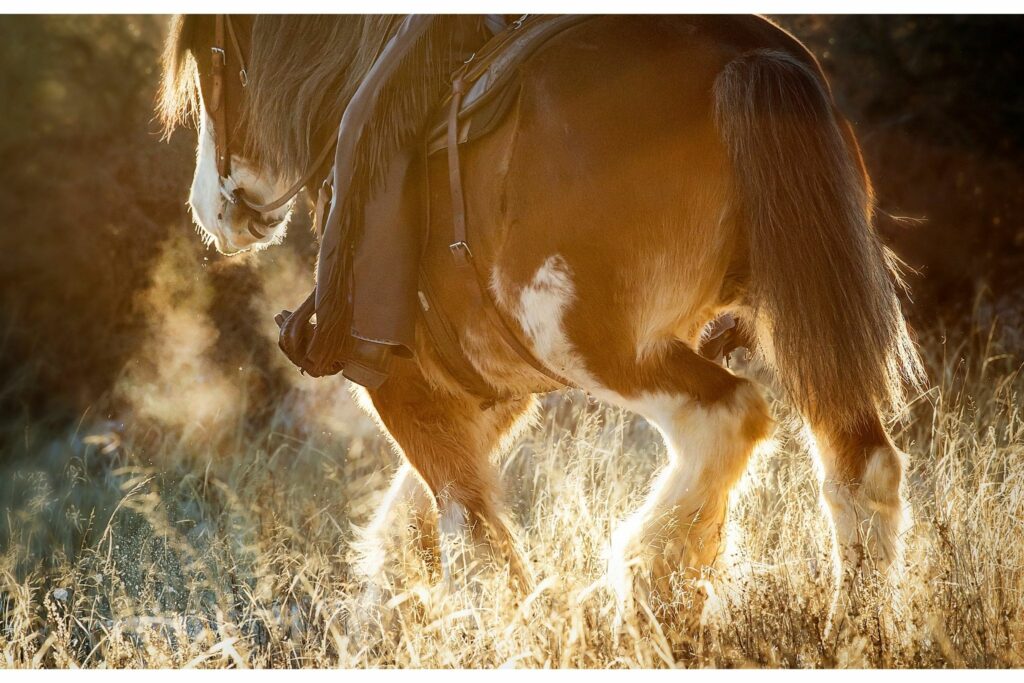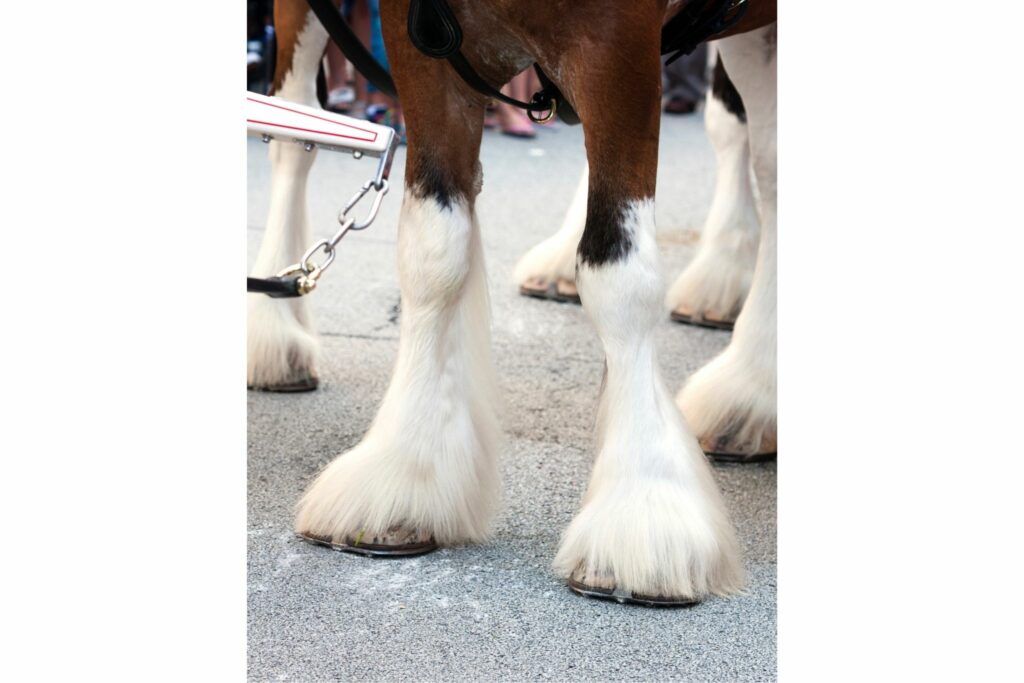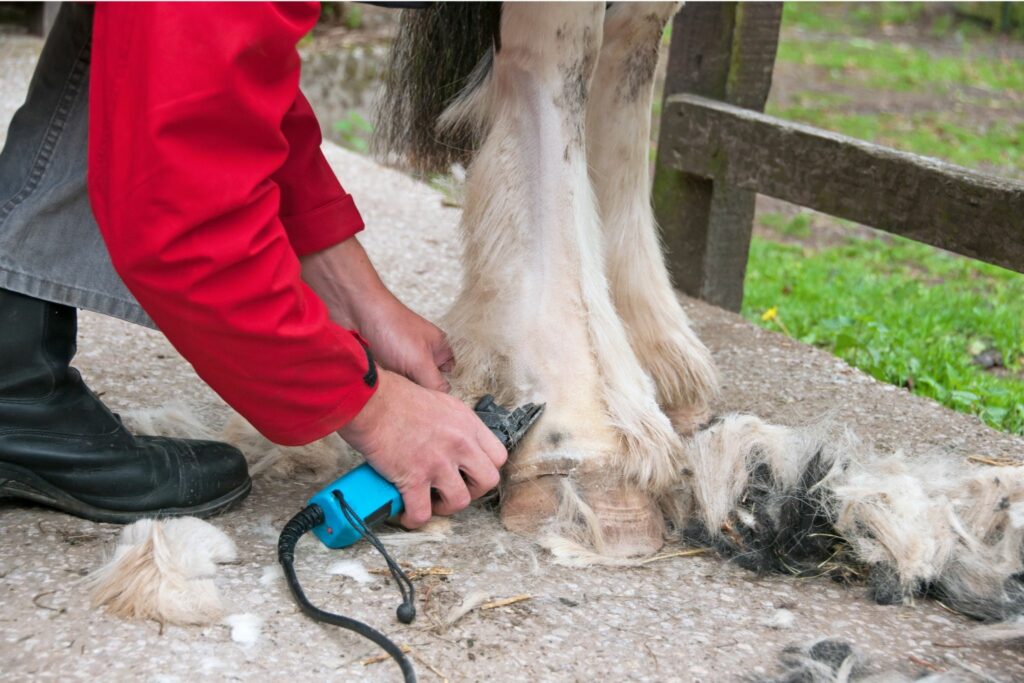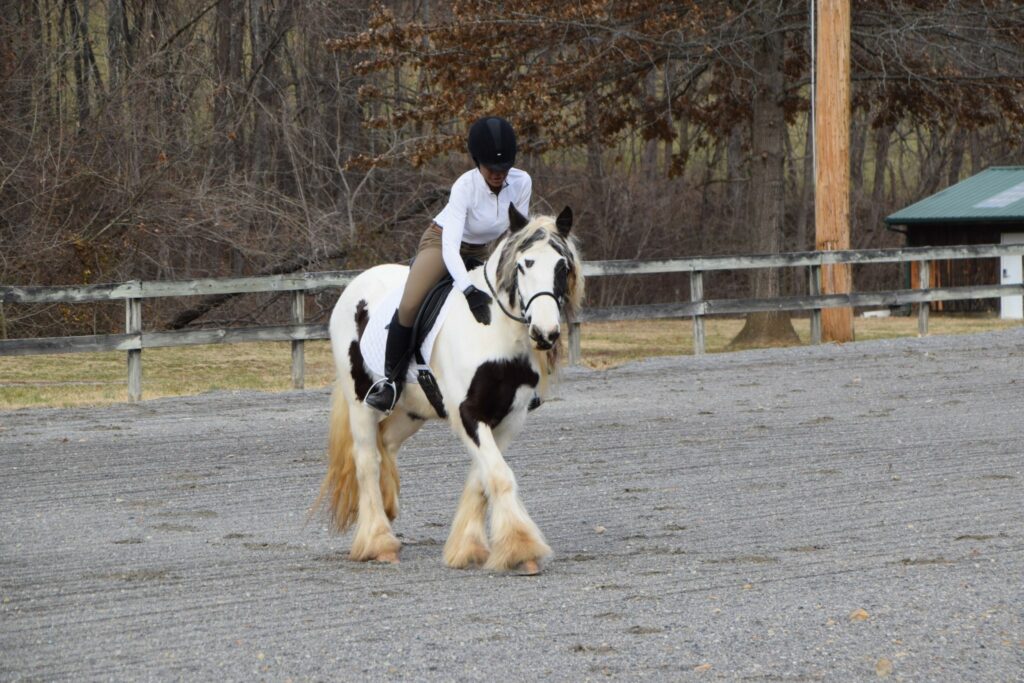Horse News
Member
Feathers Aren’t Just for Birds
Nothing really compares to the first time you set eyes on a big bodied Clydesdale with silky white feathers cascading down the lower half of their leg. Inevitably, a kid nearby will groan “but horses don’t have feathers!” as a handler explains for the umpteenth time that day what these long hairs reaching all the way to the ground are really called.
Horse feathers are a flashy and unique characteristic of a variety of breeds from light bodied ponies to strong and hardy draft horses. The longer locks of hair serve an important function for horses in wetter climates, providing protection from brambles and rough terrain on long treks. Feathers in domestic horses do require a bit of extra grooming to keep them looking silky and healthy.
Clydesdales aren’t the only horses that come with this extra “flair.” Feathers are a feature on horses of many shapes and sizes.
Feature Photo Credit: Sisters Horsing Around
Horse Feathers: Defined
Horse feathers are the long hairs that grow over the back and sides of a horse’s leg, sometimes covering the hoof partially or entirely. This feathering is present year-round.
Do all horses have feathers?
Most horses tend to have a little bit of extra hair right at the fetlock joint just above their hooves, (moreso in the winter), but does that mean all horses have feathers? No. This trait is breed-specific and seems to be more common in pony and draft breeds.
Why feathering?
Feathering is mostly a cosmetic feature of the domestic horse that is a lasting tribute to the evolutionary adaptations that have protected horses’ legs from harsh elements, rough terrain, and moisture.

What function do feathers serve?
The long and thick hairs cascading down some horses legs make a waterproof protective barrier to keep the undercoat and skin dry from the harsh elements, while also protecting their legs against brambles or other snags in underbrush.
Breeds with Horse Feathers
Horses that originate from cooler and damper climates like Europe and some parts of the US, grow extra long hairs on their legs that flow down all the way. or almost. to the ground. You typically won’t see a breed that comes from a warmer climate with feathers. A few examples of feathered breeds common today are the Clydesdale, Shire, Friesian, and a variety of European pony breeds such as the Fell pony or Dales pony.
Clydesdale
Clydesdales are a large draft horse breed. Stallions often weigh in at an excess of 2,000 pounds and over 17 hands tall. Typically, Clydesdales are bay, black, brown, sometimes chestnut or even roan colors. Clydesdales are generally good natured and friendly horses closely related to another English Draft breed—the Shire horse.
- Country of origin – Scotland
- Notable feather features – Mostly white feathers with white markings extending up the leg sometimes up onto the belly of the horse. Feathers are long, silky and generally cover all of the hoof.

Friesian
I often hear people describe Friesians as the “black beauties of the horse world” and they truly are beautiful! These fancy horses are known for having a smooth and powerful stride with an elegant headset and very long mane, tail and feathers! Originally used as war horses, Friesians are very versatile. Average height ranges from 15 hands to 17 hands, making them suitable for a variety of rider sizes as well.
- Country of origin: The Netherlands
- Notable feather features: Friesian horses have feathers that grow mostly out of the back and to the side of the leg rather than covering the whole leg and hoof.
Shire
These massive English horses stand at a whopping 16 hands or higher according to the breed standard. This breed of draft horse comes in black, dark brown, bay or gray colors only. Roan and Chestnut colors are not permitted for this breed.
- Country of origin: England
- Notable feather features: Similar to the Clydesdale, Shire horses have primarily white feathers that are full and cover most of, if not all of, the hoof. Notably different from Clydesdale horses is that Shires may not have white patches extending over the knee or hock.
Fell Pony
Sometimes described as a mini Friesian horse, these black ponies are sturdy, surefooted and versatile. Averaging just over 13 hands, Fell ponies make suitable mounts for both kids and smaller adults.
- Country of origin: North England
- Notable feather features: Fell feathers are made of both coarse and fine hairs. They may shed some of the finer hair, only keeping the hairs at the heels during the summer months.
Dales Pony
This refined pony stands at about 13 hands. They have the stamina needed for long treks, making this pony appealing for trail rides and distance efforts. They were originally bred for hard work, pulling carts, trudging through snow and making hay runs.
- Country of Origin: England
- Notable feather features: Markings are really important for the breed standard. Stallions and mares with white at the fetlock or lower are graded to be the best breeding stock. Feathers are silky and full below the fetlock as well.
How to Groom Horse Feathers
Just like longer hair in humans requires a little bit of extra daily care and attention, so do horse feathers. The longer hair makes for some additional challenges. It’s not easy to check for inflammation or injury to the lower leg, or to check for a common condition called scratches or mud fever.
Keeping a horse’s feathers clean and dry is essential to maintaining skin and lower leg health.
Here are some tips we collected to help keep your horse’s feather’s looking flashy:
- Feed a healthy, forage-based diet, full of omega 3 and 6 fatty acids
- Keep feathers clean from mud, manure and other debris
- Detangle and brush the feathers daily with a comb
- Wash the leg hairs down to the skin with soap and water regularly
- Whenever the feathers are wetted, dry them thoroughly using a hair dryer ensuring no wet areas of hair touch the skin
Keep the feathers oiled, especially in wet or muddy climates to help repel water and dirt that could cause irritation
Do you clip horse feathers?
Some owners prefer to clip feathers while others prefer to maintain them long. If you are showing a horse that has feathers as a breed characteristic, you should check your breed guidelines with an association to see if they should be shown with feathers trimmed or untrimmed.
Clydesdales, Friesians, and Shires are some examples of breeds you might want to leave untrimmed if you’re headed to the show ring.

Click to shop horse clippers at Amazon


If you aren’t sure if you should keep your horse’s feathers long, consider the following factors to help you make your decision:
- What season is it? What climate am I in? Hot, humid, damp weather might mean that moisture can sit under the feathers and cause problems.
- How much time do you have to spend on grooming? Feathers do add daily grooming time and added bath time! Am I willing to blow dry all 4 of my horse’s legs after a bath?
- What kind of work is my horse doing? Horses doing more agile work such as reining, backcountry trails, or eventing, might consider trimming. You’ll be able to better assess injuries visually that way and cut down on grooming time.
- Is my horse injured or prone to skin or lower leg problems? Feathers can stop cold water, ice therapy, or topical gels and creams from reaching the skin where it’s needed most.

Source: Sisters Horsing Around
Frequently Asked Questions
Q: What does the expression “horse feathers” mean?
According to Mirriam-Webster it is an expression that means nonsense or being flabbergasted.
Q: Do some horses have hairy hooves?
It might look like some horses with feathers have hairy hooves, but even those with the most hair in their feathers will not grow hair on the hoof capsule itself.
Q: Are horses born with feathers on their hooves?
Horses that have the genetic marker for feathers will grow them from birth.
Parting Thoughts
Horse feathers are such a fun and unique characteristic of certain horse breeds from tall to small. Feathers add personality, movement and energy to a horse’s natural gaits and, when cared for properly, won’t cause problems for you or your equine friend.
P.S. Enjoy this article? Trot on over to:
- Wild & Hair Free: What is Horse Body Clipping?
- All About Horse Dapples (Genetics, Breeds, etc.)
- 7 Best Blankets for Happy Horses
- 5 Best Clippers for Horse Body Clipping
- Horse Hay FAQs: List of Types of Hay, What Hay is Best, etc.
- Why Some Horses Wear Shoes (And Others Don’t)
Sources
- Grooming Feathers: Pro equine grooms
- Smartpak Equine Supplement education, “How do skin and coat supplements work”
- Structure of the Skin in Horses Oct 2018 Article by Karen A. Moriello, DVM, DACVD, Department of Medical Sciences, School of Veterinary Medicine, University
- https://www.usef.org/learning-center/videos/the-friesian-horse)
- Shire horse breed standard
- Fell Pony Breed standard
- Dales pony breed standard
The post Horses With Hairy Feet? Yep, They’re Called Feathers. appeared first on Horse Rookie.
Continue reading...
